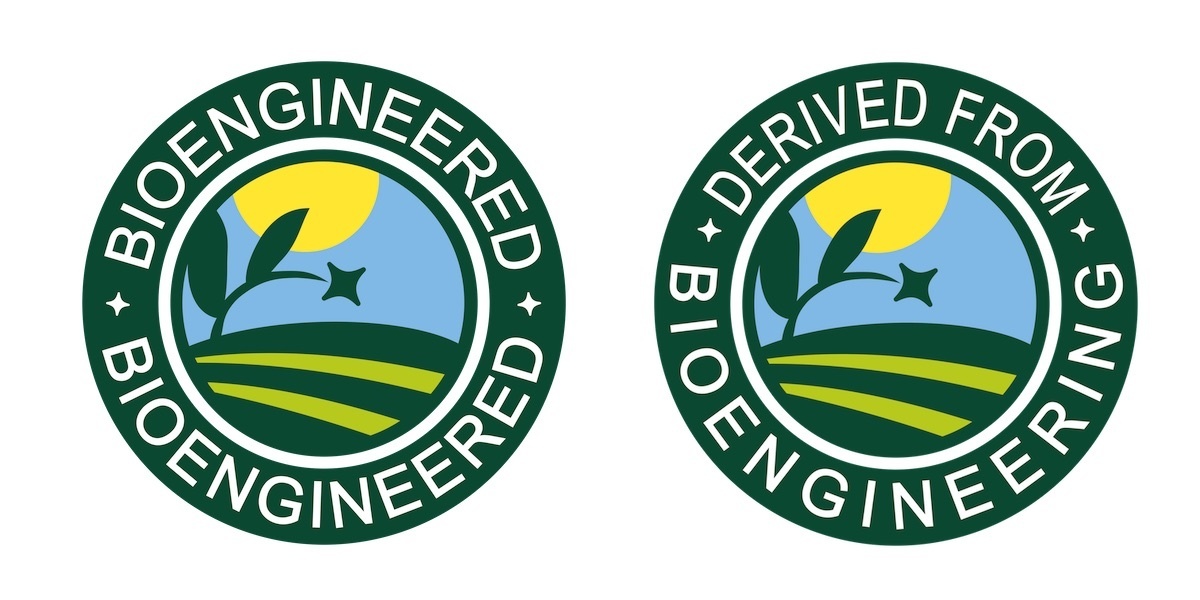

The U.S. Department of Agriculture (USDA) on Thursday announced its long-awaited rule on the labeling of foods containing genetically engineered, or GMO, ingredients. Just don’t expect the letters GMO to appear on these products.
Under the new “National Bioengineered Food Disclosure Standard,” such items will feature the term “bioengineered” or BE foods.
From Jan. 1, 2022, food companies will have four options to make this disclosure, according to the USDA’s fact sheet:
- On-package text, e.g. “Bioengineered Food,” or “Contains a Bioengineered Food Ingredient.”
- Electronic or digital disclosure—must include instructions to “Scan here for more food information” or similar language, and include a phone number
- Text message disclosure
- Or a USDA-approved symbol:
USDA
After years of a contentious battle that pitted food and chemical giants against state-level GMO mandates, President Obama signed a law in July 2016 that directed the Secretary of Agriculture to come up with a national labeling standard for products that contain genetically modified ingredients.
Critics of the new labeling standard say it allows food companies to use QR codes, a website URL or 1-800 numbers for this disclosure rather than a clear, national labeling standard.
“This rule is filled with loopholes that will allow manufacturers to use digital codes and other technology that make GMO disclosure more difficult for consumers than simple on-package labels. Many people don’t have access to smartphones needed to scan QR codes, or access to a good signal while shopping,” Food & Water Watch executive director Wenonah Hauter said in an emailed statement.
In today’s announcement, Secretary of Agriculture Sonny Perdue said the new labeling standard increases the transparency of the nation’s food system, and ensures clear information and labeling consistency for consumers about the ingredients in their food.
“The standard also avoids a patchwork state-by-state system that could be confusing to consumers,” he added.
But Gregory Jaffe of the Center for Science in the Public Interest (CSPI), which advocated for term “genetically engineered” on packaging, argued that the new labeling standard could sow confusion as consumers might not be familiar with the term “bioengineered.”
Secondly, Jaffe said, the new standard allows an exemption for highly processed ingredients such as sugar and vegetable oils that are chemically indistinguishable from their non-GMO counterparts.
“Most studies have shown that consumers expect highly processed ingredients to be labeled and many food manufacturers want to provide that information. CSPI agrees with the decision to disclose highly processed ingredients as ‘derived from bioengineering’ but disagrees with USDA’s decision to not mandate that disclosure,” he wrote.
The vast majority of sugar beet, corn and soybeans grown in the U.S. are genetically engineered for insect resistance or herbicide tolerance, Agri-Pulse noted.
Representatives for corn, soybean and sugar beet growers approved of the final regulations. “America’s corn farmers need a consistent, transparent system to provide consumers with information without stigmatizing important, safe technology,” National Corn Growers Association president Lynn Chrisp of Nebraska said, as quoted by Agri-Pulse.
? Just announced ? The National Bioengineered Food Disclosure Standard will provide a nationally uniform way to offer meaningful disclosure for consumers who want more information about their food – learn more https://t.co/aFtv4s37FI #foodlabels
— Dept. of Agriculture (@USDA) December 20, 2018

 233k
233k  41k
41k  Subscribe
Subscribe 
